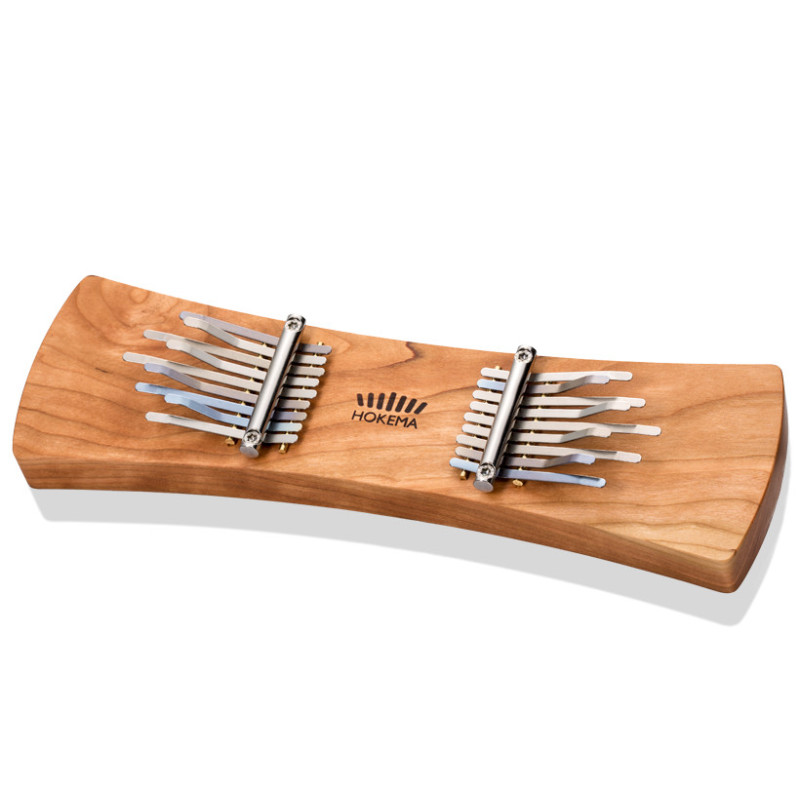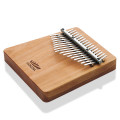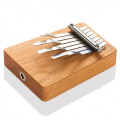The Kalimba is an instrument that can touch the whole world as its bars they are tuned in specific scales.
The Twin has two identically tuned games so one or two people can play at the same time.
-
Tuning: Tuning: 2x A minor (A-C-C-A-F-E-E-B)
-
Measures 300 x 90 x 40 mm
-
Weight: 440 g
Made with a solid body of American black cherry and with the treated surface and polished with oil and natural waxes.
Touch alone
Bra the Twin with both hands so that each thumb can reach one of the games. Thumbs can now touch the nine tones on both sides of the instrument. Cada notes his twin on the other side that resonates when he touches his 'brother'. Playing alternately with both thumbs, different tone sequences can be produced that touching in a single kalimba with the same tuning. Separate you can play a wide range of other scales by simply refining individual tones.
Playing in duo
The real reason that led to the development of the Twin Kalimba was the desire to have an instrument to play together. Terapeuta/patient, couples, members the family, friends, etc. The identical tuning of the two note games ensures scales of harmonious tones and sounds. The resonance of the tones is captured by the wooden body and the companion can feel it physically. The kalimba remains tuned when touched, but the tuning can be changed if desired. Therefore, there are also possible different scales on both sides of the instrument that differ but that nevertheless harmonize each other.
Each kalimba Hokema is crafted and passes through strict quality control by its experts. These instruments are beautiful and easy to play and have a great commitment to the sustainability the. The bodies are made of solid American cherry and are received exclusively from German suppliers and tropical woods are never used.
About Hokema
This company, based in the small town of Walsrode in Baja Saxony, has developed and produced wonderful kalimbas since 1985. Peter Hokema, the founder and owner of the she experimented with several instruments during her study the and this was what led him to discover these traditional african instruments and bring them to a higher level.













